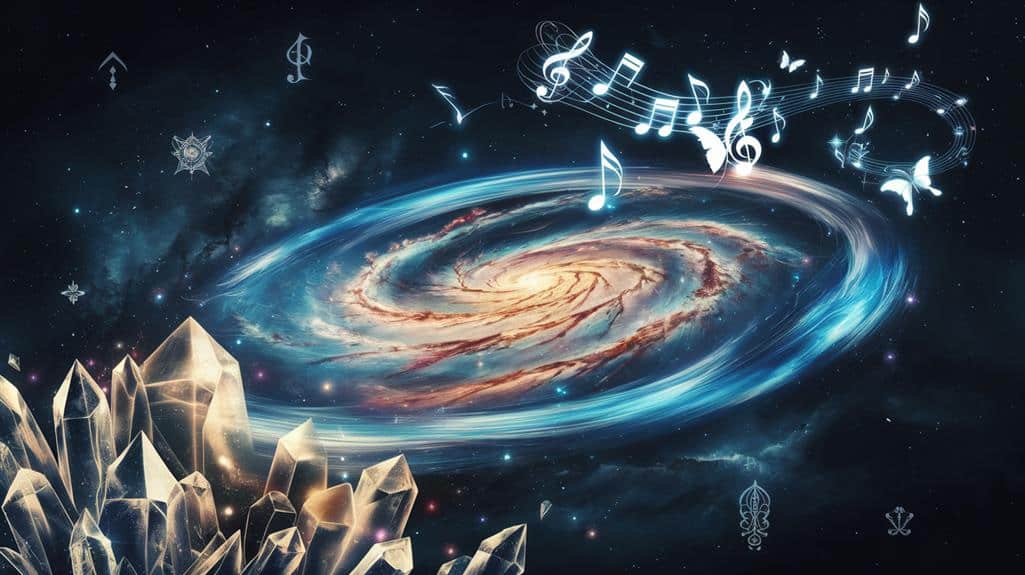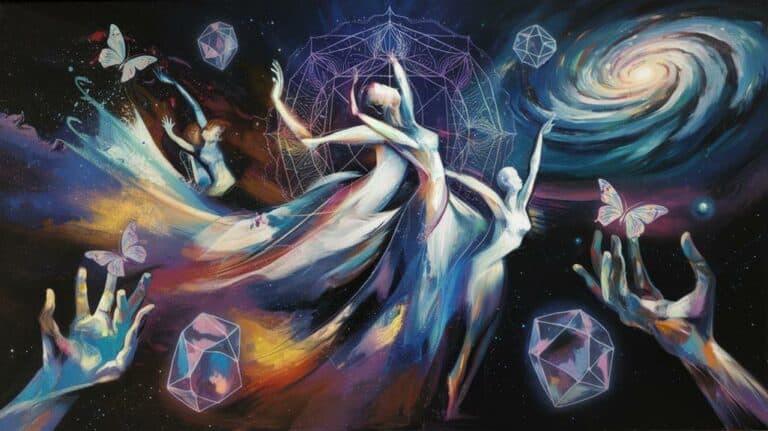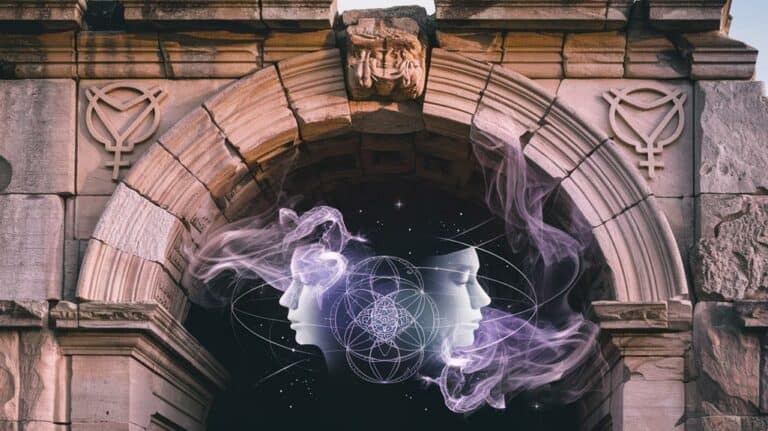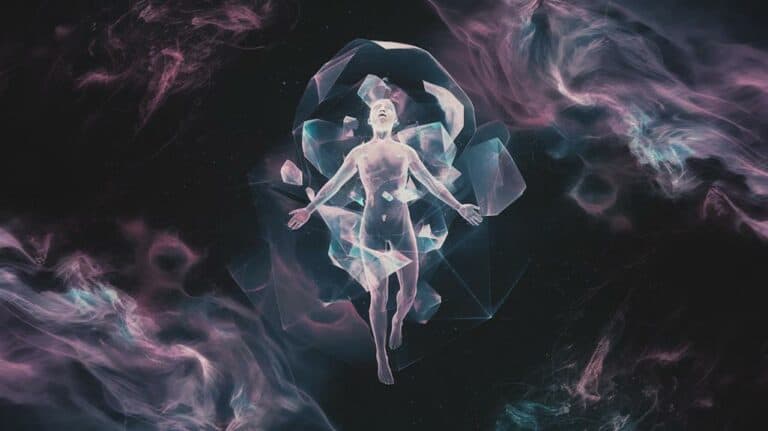The Influence of Mysticism on Art and Music
When you explore the intersection of mysticism and creative expression, you’ll discover a rich tapestry where the visible and invisible worlds converge. Throughout history, artists and musicians have served as bridges between earthly experience and divine mysteries, translating ineffable truths into forms we can see, hear, and feel. From the sacred geometries of Islamic art to the transcendent harmonies of Gregorian chants, these works don’t just represent spiritual concepts—they’re designed to transform consciousness itself. As modern creators continue to draw from this well of mystical inspiration, they’re revealing new ways to access ancient wisdom through contemporary means.
Ancient Sacred Art Traditions
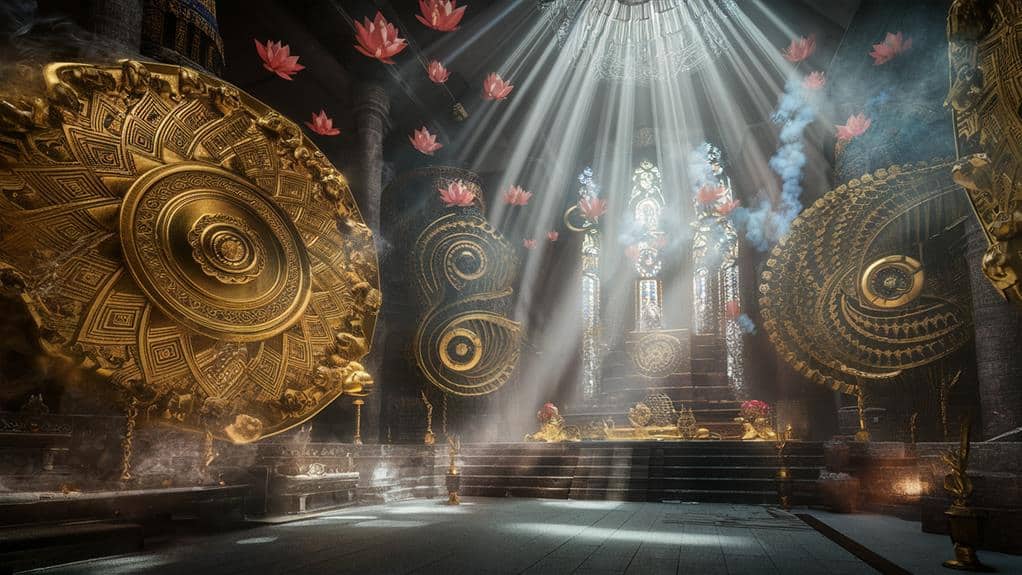
Ancient sacred art emerged across civilizations as a bridge between the physical and spiritual spheres. As you explore these timeless traditions, you’ll discover how artists channeled divine inspiration through intricate symbols, sacred geometry, and ritualistic techniques.
You’re witnessing the manifestations of humanity’s eternal quest to touch the infinite through creative expression.
In temples and sacred spaces, you’ll find walls adorned with mandalas, icons, and hieroglyphs that aren’t merely decorative – they’re gateways to transcendent dimensions. These works speak in a visual language that transcends cultural boundaries, inviting you to decode their mystical messages.
You’ll notice how Egyptian tomb paintings, Buddhist thangkas, and medieval Christian illuminations all share an underlying purpose: to map the invisible realms of spirit.
When you study these ancient traditions, you’re connecting with artists who understood that their craft wasn’t just about aesthetic beauty – it was a form of prayer, meditation, and spiritual transformation.
They’ve left you a legacy of wisdom encoded in pigment and stone, waiting for your conscious engagement to reveal their deeper meanings.
Mystical Symbolism Through History
Countless mystical symbols have woven their way through human art and ritual across millennia, forming a rich tapestry of spiritual meaning that persists today.
You’ll find sacred geometry in Gothic cathedral windows, where perfect circles and triangles echo divine proportions that you can trace back to ancient temples and pyramids. These enduring patterns speak to your deepest understanding of universal order and cosmic harmony.
As you explore deeper, you’ll discover how the serpent has transformed from a symbol of wisdom in some cultures to an emblem of temptation in others, while the eternal tree of life connects earth to heaven across countless traditions.
You’ll notice how specific symbols transcend cultural boundaries – the spiral appearing in Celtic art, Native American petroglyphs, and Asian mandalas, each time pointing to the infinite cycle of creation.
In medieval European manuscripts, you’ll find intricate illuminations where mystical creatures and celestial bodies dance together in gold leaf, revealing hidden truths about humanity’s relationship with the divine.
These symbols don’t just decorate – they’re keys that release doors to deeper spiritual understanding, inviting you to explore domains beyond ordinary perception.
Music and Transcendental States
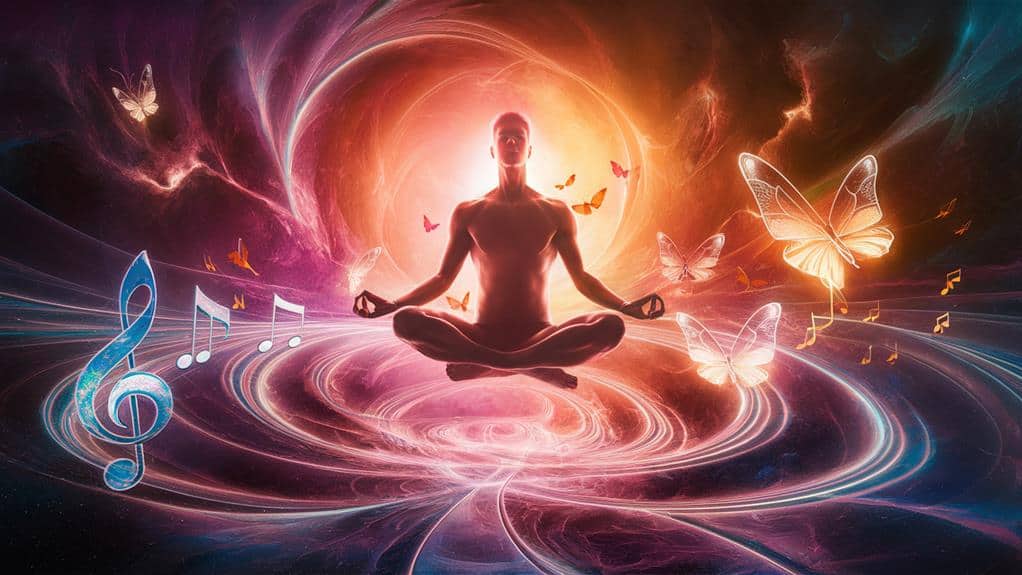
Listening to sacred music can trigger profound shifts in consciousness, whether through Gregorian chants echoing in medieval monasteries or the hypnotic rhythms of Sufi ceremonies.
You’ll find that specific frequencies and harmonic patterns can alter your brainwave patterns, leading you into meditative states that transcend ordinary awareness.
When you immerse yourself in sacred music, you’re connecting to practices that spiritual seekers have used for millennia.
You’ll discover how sustained drones in Indian classical music can anchor your consciousness, while the repetitive phrases of Buddhist chanting can dissolve your sense of separate self.
The vibrations you’ll experience aren’t just sound waves – they’re gateways to altered states of perception.
You’re tapping into what mystics call “sacred sound” when you engage with transcendental music.
Consider how Tibetan singing bowls create overlapping frequencies that shift your awareness, or how the complex polyrhythms of African ceremonial drumming can induce trance states.
Through these sonic portals, you’ll find yourself accessing deeper layers of consciousness, where the boundaries between inner and outer experience begin to blur.
Religious Architecture and Divine Light
Just as sacred music creates auditory pathways to transcendence, religious architecture harnesses light to manifest the divine in physical space.
You’ll find this divine illumination in the soaring Gothic cathedrals, where sunlight streams through stained glass windows, transforming ordinary rays into celestial messages that dance across stone floors. In Islamic mosques, intricate geometric patterns filter light into sacred geometries, while Buddhist temples use shadow and illumination to guide your meditation through carefully arranged spaces.
You’re witnessing an ancient architectural language when you enter these sacred spaces, where every beam of light has been choreographed to elevate your spirit.
The oculus of Rome’s Pantheon draws your eye heavenward through a perfect circle of sky, while Chartres Cathedral’s rose window fractures sunlight into a kaleidoscope of biblical narratives.
These aren’t merely aesthetic choices – they’re deliberate techniques developed over centuries to help you transcend the mundane.
When you stand in these spaces, you’re experiencing the same transformative power that has moved countless seekers before you, as architecture becomes a bridge between the earthly and the divine.
Modern Mystic Creative Expressions
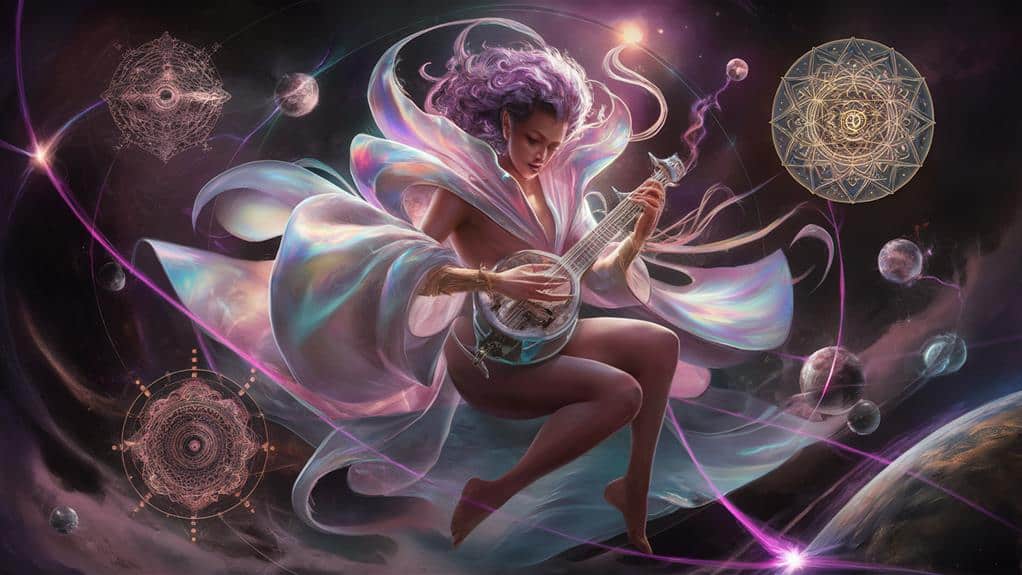
Contemporary artists and musicians continue weaving mystical elements into their work, transcending traditional religious boundaries while exploring new pathways to the divine.
You’ll find these modern mystics creating immersive installations where light, sound, and space converge to evoke transcendent experiences, much like their ancient predecessors did with sacred geometry and chants.
When you explore today’s mystical expressions, you’ll discover artists like Bill Viola, whose video installations plunge you into contemplations of birth, death, and consciousness.
You’ll encounter musicians who blend electronic soundscapes with sacred mantras, creating sonic temples where you can lose yourself in meditation.
In galleries worldwide, you’ll see how abstract expressionists channel spiritual energy onto canvas, while digital artists craft virtual domains that pulse with cosmic symbolism.
These contemporary creators don’t just reference mystical traditions – they’re forging new ones.
They’re using technology to amplify age-old questions about existence and consciousness.
Through their work, you’re invited to step beyond the material world and into spaces where time dissolves, where the boundary between observer and observed blurs, and where the infinite becomes tangible, if only for a moment.
Sound Healing Across Cultures
Throughout history, sound healing traditions have woven themselves into the cultural fabric of civilizations worldwide. You’ll discover these practices in the resonant chants of Tibetan singing bowls, the rhythmic drumming of Native American ceremonies, and the harmonic overtones of Australian didgeridoos. Each culture has developed its unique approach to harnessing sound’s transformative power.
When you explore deeper into these traditions, you’ll find that sound healing isn’t just about the audible frequencies – it’s about the spaces between sounds, the intentional silences, and the sacred geometries that emerge from specific tonal combinations.
You’re connecting to the same vibrational wisdom that ancient shamans and medicine people accessed through their sacred instruments and voices.
In today’s world, you’re witnessing a renaissance of these practices as people rediscover how different frequencies can influence your body’s natural rhythms.
From the om chants of Indian yogis to the binaural beats of modern sound therapy, you’re part of an unbroken lineage that recognizes sound’s ability to bridge the physical and spiritual domains, offering pathways to healing that transcend cultural boundaries.
Digital Age Spiritual Art
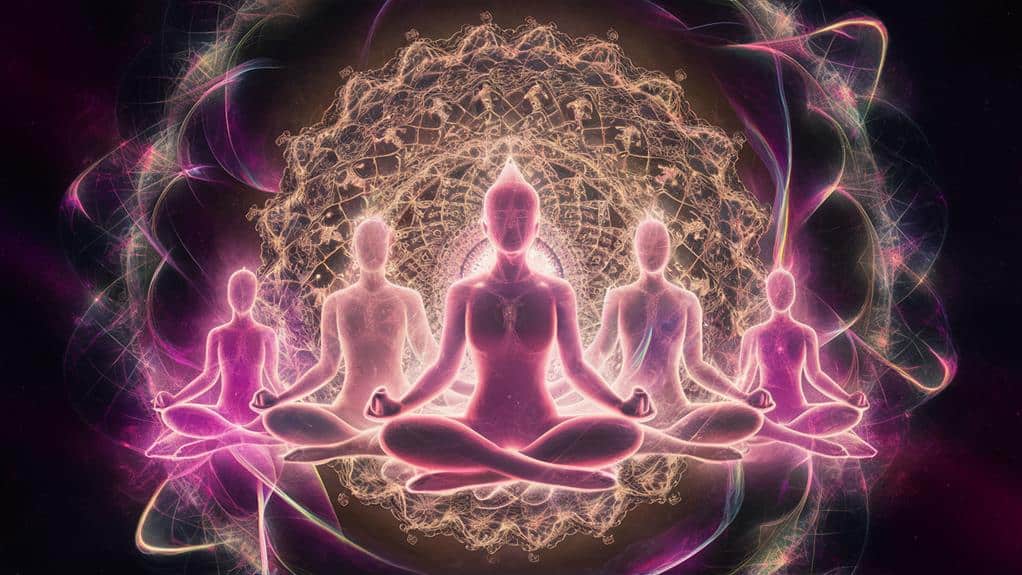
Merging ancient mystical symbols with cutting-edge technology has revolutionized spiritual art in the digital era. You’ll find sacred geometries pulsing through virtual reality spaces, while fractal patterns dance across screens in meditation apps that transform your consciousness. As you explore these digital domains, you’re witnessing the marriage of timeless wisdom with contemporary innovation.
In today’s interconnected world, you’re able to experience spiritual art that transcends physical limitations. Digital artists are creating immersive environments where mandalas morph into three-dimensional landscapes, and ancient runes blend with generative algorithms to produce ever-evolving sacred spaces.
You’ll discover how augmented reality overlays mystical symbols onto the physical world, while artificial intelligence helps generate unique spiritual imagery based on centuries-old traditions.
These digital expressions aren’t merely aesthetic – they’re portals to deeper understanding. When you engage with these works, you’re participating in a new form of spiritual practice, one that bridges the gap between traditional mysticism and modern technology.
Through pixels and processing power, you’re connecting to the same eternal truths that have inspired seekers throughout history, now reimagined for the digital age.



